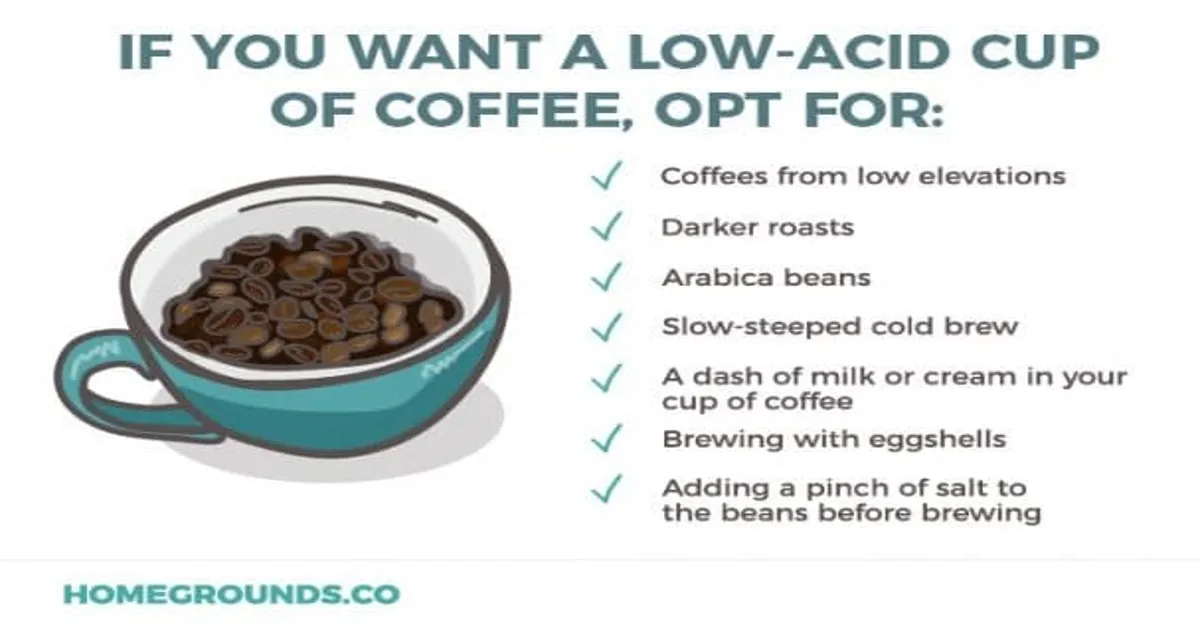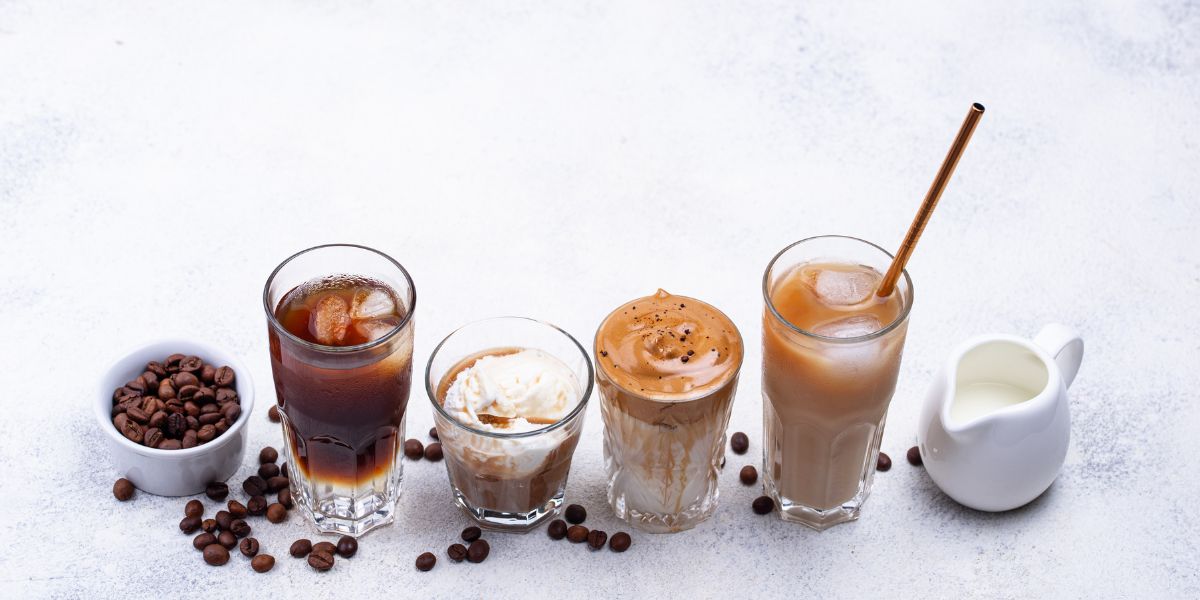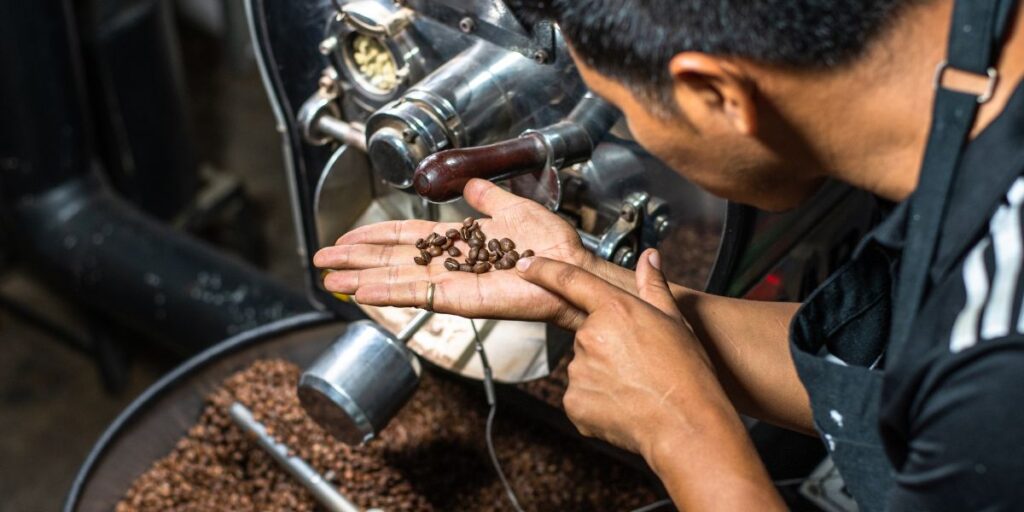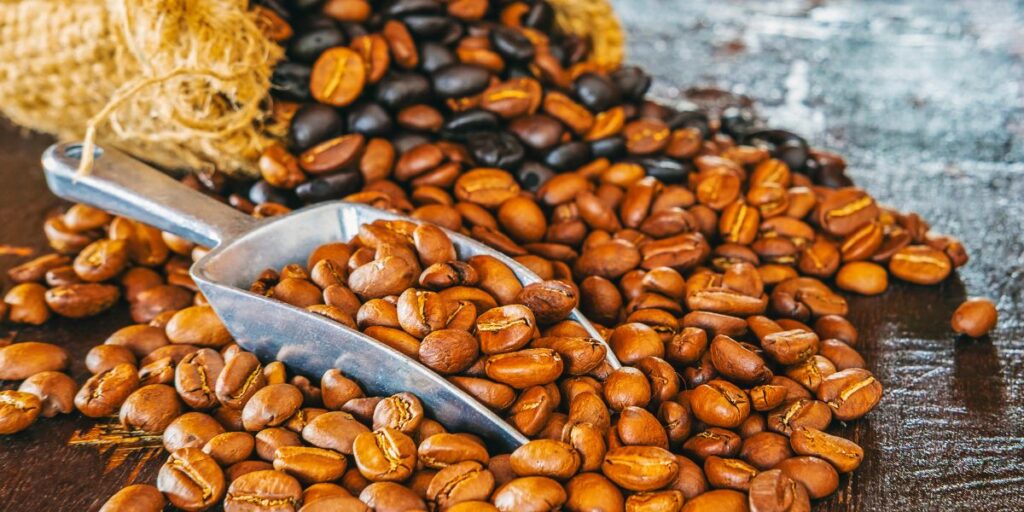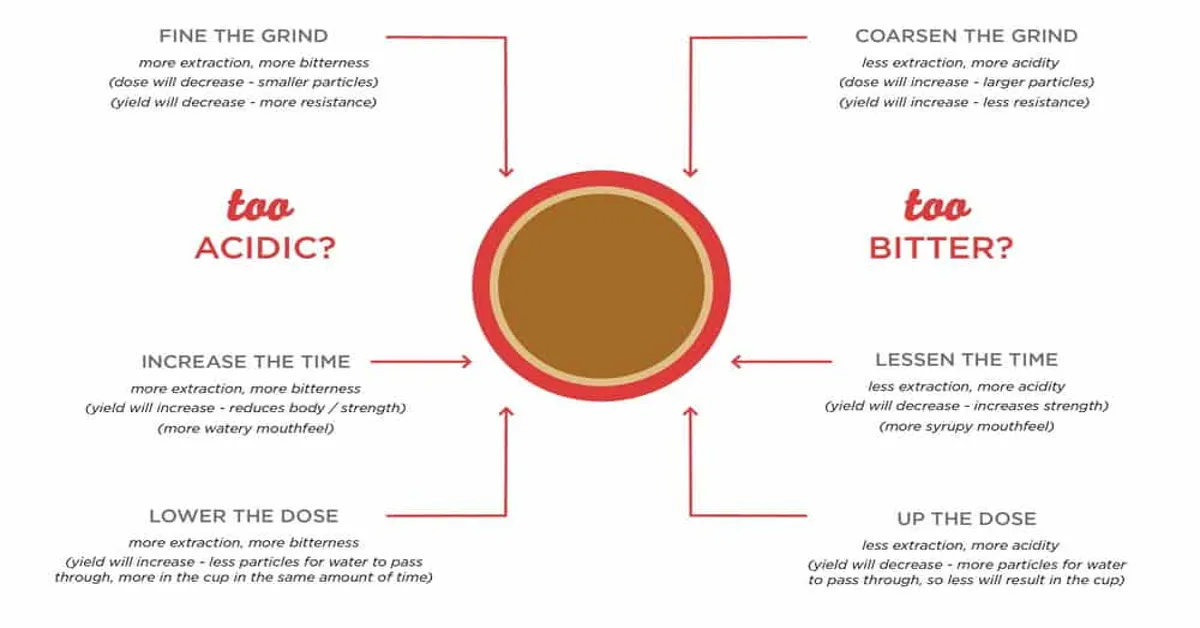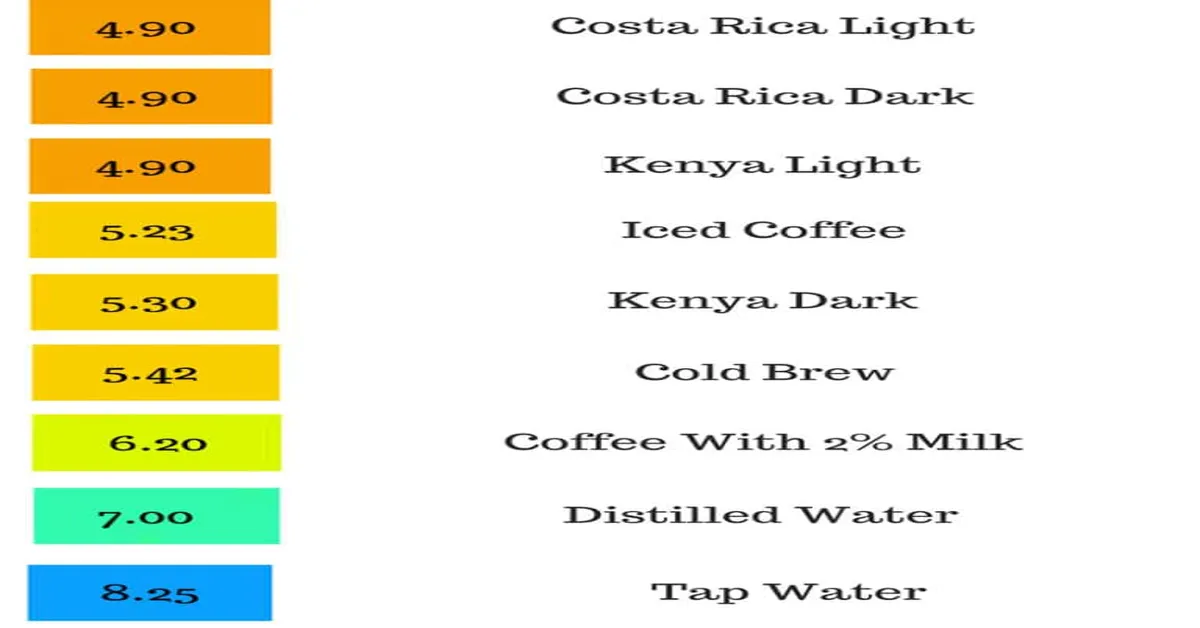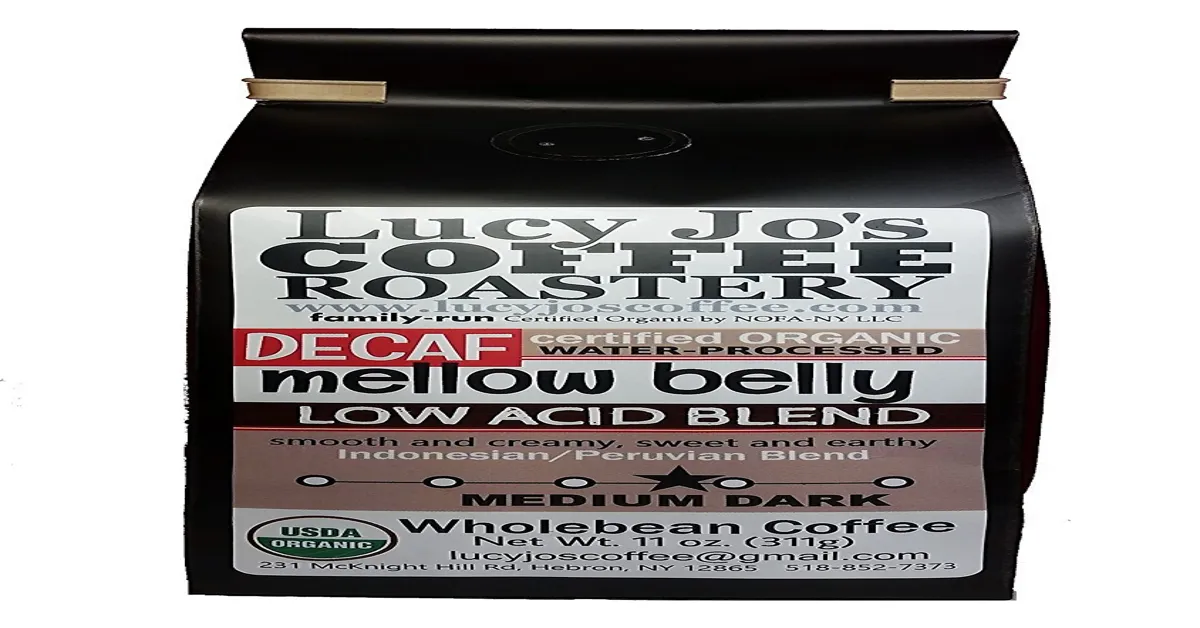https://www.livestrong.com/article/511107-how-to-neutralize-the-acid-in-coffee/
As dawn breaks and the aroma of freshly brewed coffee fills the air, a subtle yet persistent question lingers among enthusiasts: does milk truly tame the acidic beast within our beloved cup of joe? Picture a world where each sip is a harmonious blend of bold flavors and creamy smoothness, devoid of any piquant bite. It’s a quest for balance that has stirred conversations in cafés and kitchens alike. *In the pursuit of this caffeinated harmony*, one potential ally emerges from the dairy aisle, promising to transform your coffee experience.
Join us as we delve into the heart of this creamy conundrum, where the fusion of lactose and espresso swirls in a dance of scientific intrigue. Will your morning ritual be forever changed by this simple addition, or is the solution more complex than a mere splash of milk? Let’s unravel the myth and discover the truth behind milk’s role in your perfect cup.
Key Takeaway
- Exploring the popular belief, this article examines whether adding milk to coffee can actually mitigate its acidity and lead to a smoother beverage.
- A scientific look into the interplay between lactose and espresso reveals the complexities behind achieving the right flavor balance in coffee.
- The investigation goes beyond a simple splash of milk, hinting at a more intricate solution to enhance the coffee-drinking experience.
- The piece aims to dispel myths and uncover facts about the impact of milk on coffee’s acidity, with implications for coffee aficionados’ morning routines.
- Readers are invited on a journey to discover whether their quest for the perfect cup of coffee can be fulfilled by incorporating milk, or if they should consider other methods.
Introduction to Acidity in Coffee
Unveiling the Mystery: Does Milk Reduce Acidity in Coffee? Embark on a flavorful journey as we demystify the age-old question: does milk reduce acidity in coffee? It’s a tale as old as time for coffee aficionados — the quest for a smoother cup that’s gentle on the palate. Here’s the scoop: milk indeed has the superpower to tame the acidic bite of coffee. The proteins in milk, particularly casein, act as a neutralizing agent, bonding with coffee’s bitter compounds and creating a creamier and more harmonious sip.
This isn’t just a quick fix; it’s a transformative experience for your taste buds. So, next time your coffee seems too robust, remember that a splash of milk could be the perfect sidekick to balance it out. Raise your mugs to this witty alchemy that makes your morning brew a little more mellow and a lot more enjoyable!
does milk reduce acidity in coffee
| Aspect | Description | Effectiveness |
|---|---|---|
| Acidity Neutralization | Milk can neutralize some of the acidity in coffee, making it smoother. | Moderately effective |
| pH Level | The pH level of coffee is lowered when milk is added to it. | Varies with milk type |
| Calcium Content | Milk’s calcium can interact with coffee’s acids, potentially reducing acidity. | Depends on milk amount |
| Flavor Profile | Addition of milk changes the flavor profile, often reducing perceived acidity. | Subjective to taste |
| Lactose Content | The lactose in milk may contribute to a creamier texture and taste in coffee. | Can enhance overall experience |
| Individual Variability | People with different taste sensitivities may experience acidity reduction differently. | Highly subjective |
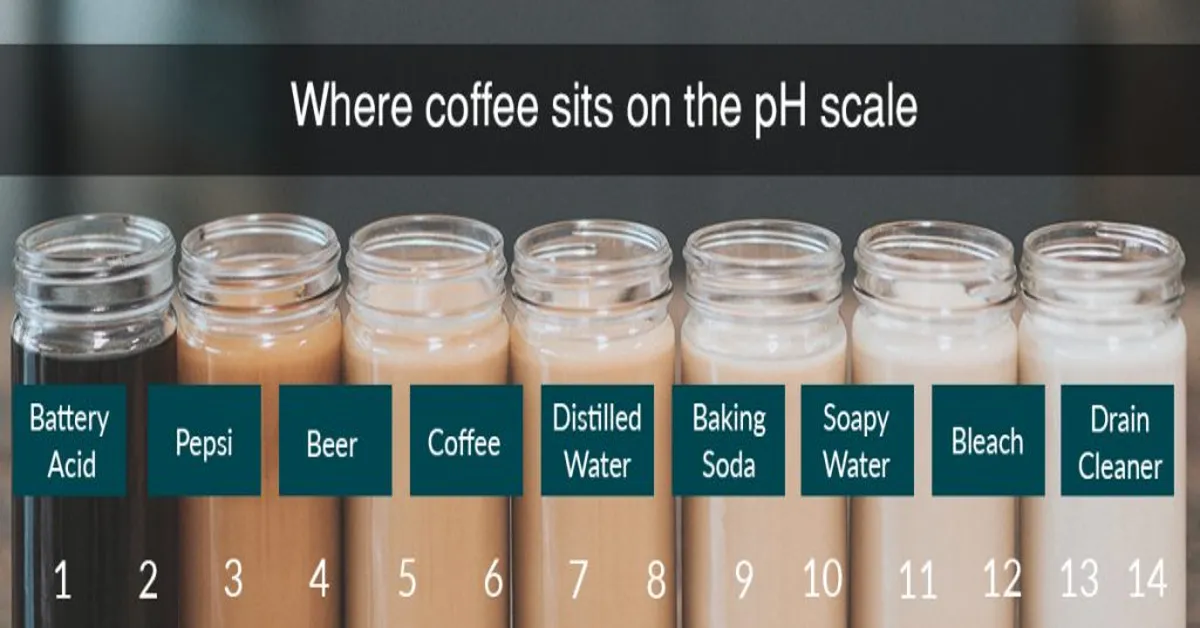
Milk as a Neutralizing Agent
Unveiling the Creamy Secret: Does Milk Reduce Coffee Acidity? Ever had your morning cup of joe only to be met with that all-too-familiar acidic bite? Fear not, for the creamy savior known as milk may just be your ticket to a smoother coffee experience. When you pour that splash of milk into your steaming mug, you’re not just crafting a café-worthy concoction; you’re engaging in a bit of culinary chemistry. Milk contains proteins that can neutralize some of the acid found in coffee, creating a gentler beverage that’s kinder to your taste buds and your tummy.
But don’t just take our word for it – dive into the science behind this dairy delight and learn how it transforms your bitter brew into a silky-smooth sip. So, let’s stir into the creamy core of this question: does milk reduce acidity in coffee? The answer is a resounding yes, with a side of nuanced delight.
The pH Scale and Coffee
Unveiling the Creamy Secret: Does Milk Reduce Acidity in Coffee? Ever found yourself wincing after a strong sip of that dark, aromatic brew? Coffee lovers often grapple with the acidity dilemma, but fear not—milk might just be your creamy knight in shining armor! When you add a splash of milk to coffee, you’re not just lightening the color and adding a silky texture; you’re engaging in a subtle chemical tango. The proteins in milk can latch onto the acidic compounds in coffee, neutralizing the pH balance ever so slightly. This doesn’t just soften the acidic punch; it can also unveil new, mellow flavors lurking in your cup.
So, in the grand coffee opera, milk does more than just make a cameo—it might just play a leading role in harmonizing your brew. Dive into the depths of this delicious dance by exploring how the alchemy of milk transforms your morning joe from a tart titan to a smooth sensation.
Practical Tips for Coffee Lovers
Mellowing the Brew: Milk’s Role in Neutralizing Coffee Acidity Embarking on a journey to tame the tempestuous tang of your cherished morning brew? Take heart, for milk may indeed be your gallant ally in reducing coffee’s acidity. When you introduce milk to coffee, a fascinating alchemy unfolds; milk’s proteins and fats interact with coffee’s natural acids, creating a smoother, creamier, and more palatable concoction. This is not mere culinary sorcery but a delightful dance of chemistry that softens the acidic edge, much to the relief of both your taste buds and sensitive stomach.
So, next time your coffee seems too bold and brash, let milk work its mellowing magic, transforming your cup into a harmonious symphony of flavors.
Read More
https://acidityincoffee.com/puroast-decaf-coffee/
https://acidityincoffee.com/low-acid-coffee-for-a-smooth-and-balanced-brew/
https://acidityincoffee.com/low-acid-coffee-ph/
https://acidityincoffee.com/low-acid-cold-brew-coffee/
Statistical Information: does milk reduce acidity in coffee
| Aspect | Detail | Significance |
|---|---|---|
| pH Level of Black Coffee | Black coffee typically has a pH level of around 5, which is considered mildly acidic. | The pH level of black coffee is important as a reference point to understand acidity changes. |
| pH Level of Milk | Milk has a pH ranging from 6.5 to 6.7, making it less acidic than black coffee. | This shows that milk is inherently less acidic and may influence the overall acidity when mixed with coffee. |
| Acidity Reduction | Adding milk to coffee can slightly raise the pH level, reducing its perceived acidity. | Milk’s ability to raise the pH level of coffee can make it more palatable for those sensitive to acidity. |
| Lactose Content | Milk contains lactose, which does not neutralize acidity, but can change the flavor profile of coffee. | The lactose in milk alters the flavor, which can indirectly affect the sensation of acidity in coffee. |
| Casein in Milk | Casein, a protein in milk, can bind to some of the acidic compounds in coffee, reducing sharpness. | The interaction between casein and coffee’s acidic compounds can be partial reason for the perceived reduction in acidity. |
| Overall Effect | While milk can modify the pH of coffee, individual perception of reduced acidity can vary widely. | The effect of milk on coffee acidity is complex and subjective, depending on personal taste and coffee strength. |
Important Notice for readers
In exploring the intriguing relationship between milk and coffee acidity, it’s essential to understand that *adding milk can indeed temper the perceived acidity* of your favorite brew. This interaction, pivotal for those sensitive to coffee’s natural tang, involves milk’s proteins which *neutralize* some of the acid, making for a smoother cup. However, the extent of acidity reduction varies with the type of milk used.
Dive deeper into this article to unveil the chemistry behind this phenomenon and how it affects your coffee experience.
FAQs
Can adding milk to coffee actually lower its acidity?
Yes, adding milk to coffee can lower its acidity. Milk has a higher pH level than coffee, and when it’s added, it can neutralize some of the acids present in the coffee, resulting in a milder flavor and potentially reducing the acidic impact on the stomach.
Is there a difference in acidity reduction between using whole milk and skim milk in coffee?
The acidity reduction in coffee when adding whole milk compared to skim milk is generally similar, as the pH level of milk does not significantly change with fat content. However, whole milk may provide a creamier texture and slightly different taste, which can affect the perception of acidity.
How does the protein in milk interact with the acidic components of coffee?
The proteins in milk, such as casein, can bind to some of the acidic compounds in coffee, like chlorogenic acid, forming complexes that are less acidic. This interaction can help to smooth out the flavor of the coffee and make it easier on the digestive system.
Does the temperature of milk affect its ability to reduce acidity in coffee?
The temperature of milk does not significantly affect its acid-neutralizing ability when added to coffee. Whether you’re using cold or steamed milk, it will still provide a buffering effect against the coffee’s acidity, although the overall taste and experience may differ.
Can lactose-free milk also reduce the acidity in coffee?
Yes, lactose-free milk can also reduce the acidity in coffee. Lactose-free milk has similar pH levels to regular milk and contains the same proteins that can bind to acidic coffee compounds, which means it can also help neutralize acidity.
Are there any coffee brewing methods that result in less acidity, reducing the need to add milk?
Some brewing methods can result in coffee with lower acidity, such as cold brew or using a French press with coarser grounds and a longer steeping time. These methods extract fewer acidic compounds, which means that even without adding milk, the coffee may be less harsh on the stomach.
Conclusion: Balancing Flavor and Comfort
Adding milk to coffee can indeed alleviate its acidity, providing a creamier and smoother taste that appeals to many. This simple act transforms the beverage, making it more palatable for those sensitive to the harshness of black coffee. As we contemplate our daily rituals and the small adjustments that enhance our lives, let’s not underestimate the power of a well-crafted cup of coffee.
The next time you sip on your customized brew, consider the chemistry at play and the cultural significance of this beloved drink. May every cup bring a moment of comfort and a spark of reflection on the simple pleasures that enrich our existence.
You Can Find The More Resources Here
https://www.livestrong.com/article/511107-how-to-neutralize-the-acid-in-coffee/
